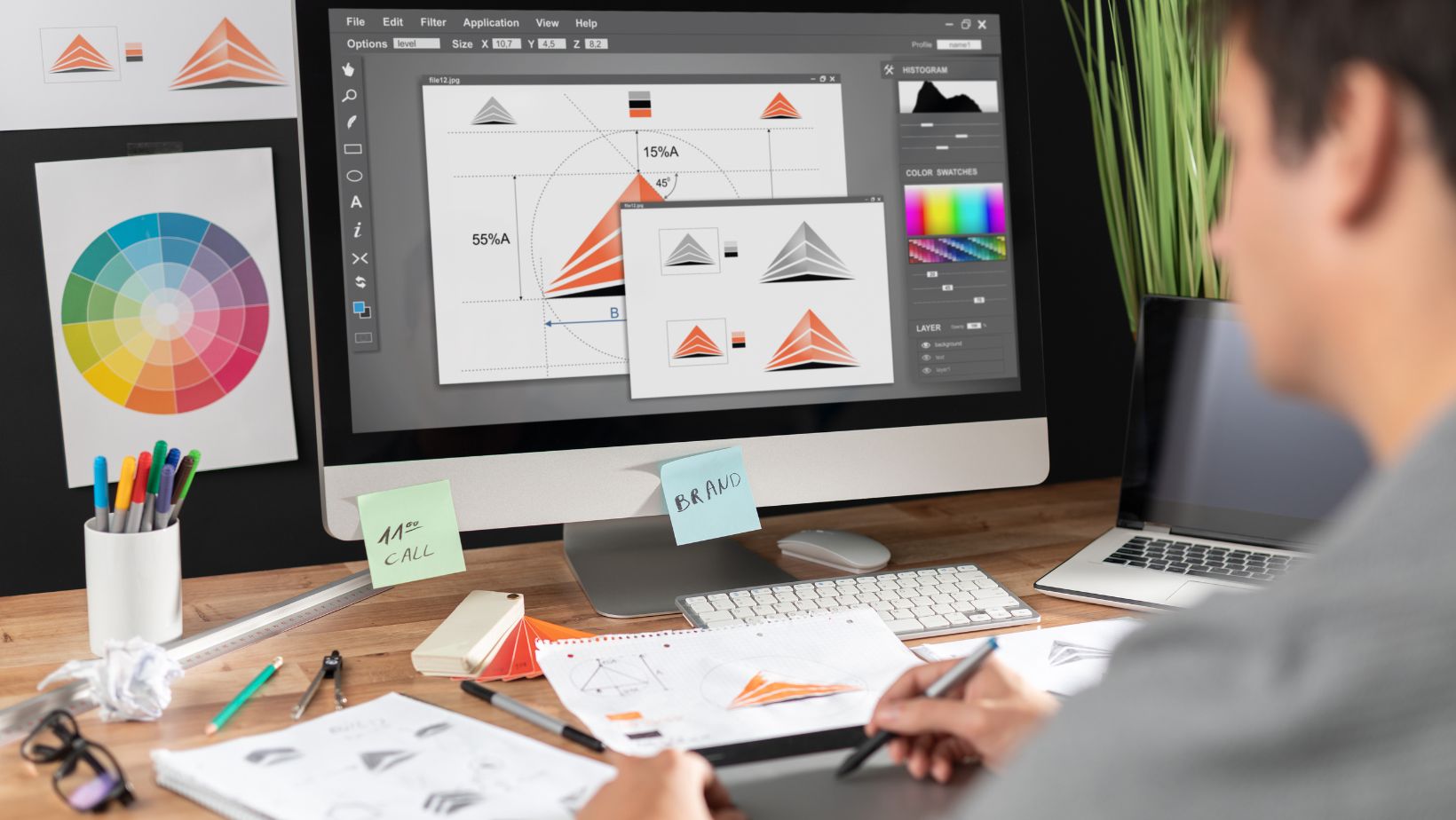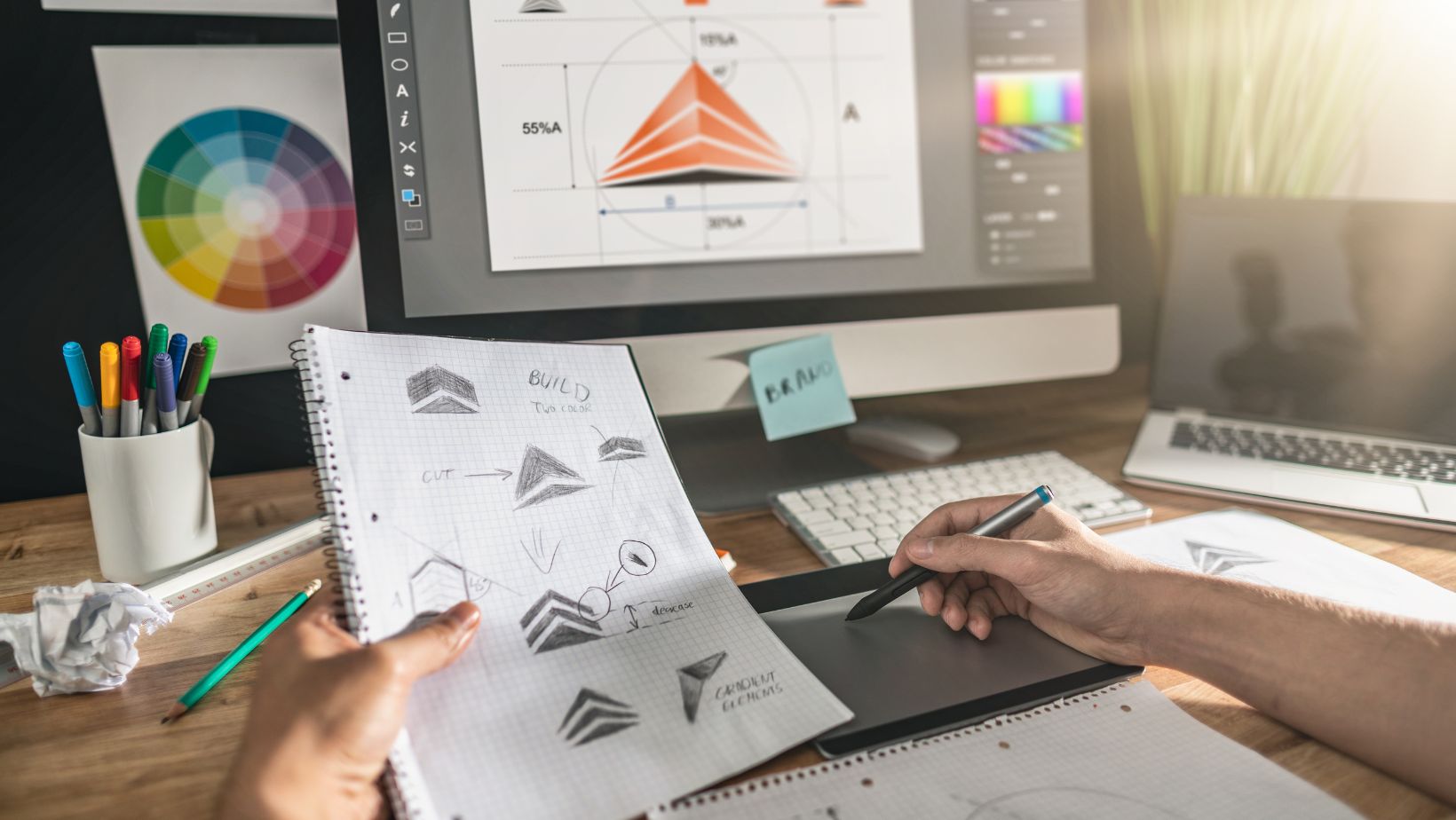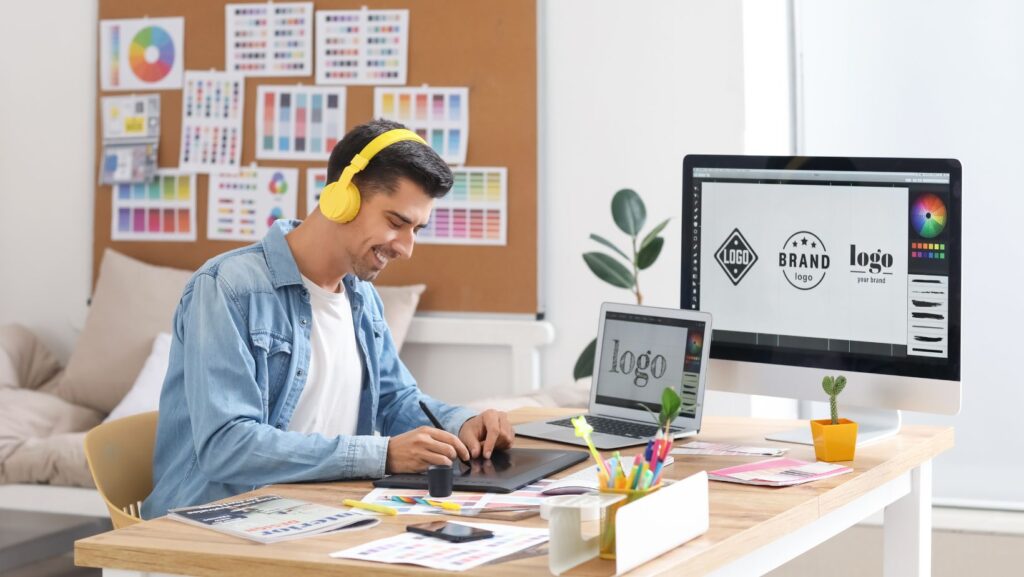In the digital age, the art of graphic and web design has never been more vital. It’s the secret sauce that makes websites not only functional, but also captivating. This piece aims to shed light on the intricate dance between graphic and web design, and why they’re more intertwined than you might think.
Whether you’re a seasoned designer, a business owner looking to revamp your online presence, or simply a curious reader, understanding the relationship between these two design disciplines can provide invaluable insights. Let’s delve into the fascinating world of graphic and web design, exploring their symbiosis and the magic they create in the digital realm.
Importance of Graphic Design in Web Design
Graphic Design holds paramount significance in the realm of Web Design. Integrating graphic elements in website layouts optimizes the interface aesthetics and ensures users get the most out of their digital browsing experience. That being said, it’s important to dive deeper into areas of user experience and brand identity, as they are key recipients of the benefits derived from graphic design.
Enhancing User Experience through Graphic Design
The effectiveness of Graphic Design in enhancing User Experience (UX) is unmistakable. Proper application of graphic components, such as color, typography, and imagery, renders a website more engaging and intuitive. For example, the use of well-structured navigation menus simplifies site exploration and improves the information architecture. Consequentially, the site visit duration improves, indicating a positive user experience.
Creating Powerful Brand Identity
Likewise, the role of Graphic Design in forging a solid brand identity is vital. An engaging and consistent aesthetic scheme – comprising logos, colors, and fonts – fosters trust and relevance among users. A classic instance includes Apple’s minimalistic and clean visual approach which dramatically contributes to its distinctive brand identity. By ensuring a consistent representation of graphical elements across a website, it becomes easier to resonate with users, thus amplifying brand recognition.
Key Elements of Graphic Design in Web Design
This section illustrates the influence of typography, color, and imagery – key elements of graphic design on web design, focusing on their strategic role in enhancing the visual appeal and user experience of a website.
Usage of Typography and Fonts

Selecting an appropriate color palette goes a long way in promoting effective visual communication. Colors evoke emotions and have a powerful impact on users’ perceptions and interaction with a website. An evident example lies in Facebook’s extensive use of blue, which promotes feelings of trust and reliability. Contrast, too, plays a pivotal role in differentiating elements and guiding visitors’ focus. For example, Amazon uses a stark contrast between its white background and black text, ensuring the content is easily readable and captures user attention effortlessly.In web design, typography plays an essential role. It extends beyond font choice, encompassing elements like font size, line-length, spacing, and letter shapes. For instance, renowned platforms like Medium employ crisp and clear fonts, aiming to optimize readability and ensuring a smooth browsing experience. Cohesive and proper use of fonts reflects professionalism and establishes a robust brand presence.
Top Graphic Design Web Design Techniques to Know
This section uncovers top graphic design web design techniques that professionals trust and implement for significant outcomes.
Responsive Design and Mobile Compatibility
A tool of immense value, responsive design involves planning and developing websites with flexible layouts. Complementing this, mobile compatibility ensures design optimization for mobile devices, given that 53% of global website traffic originates from mobile. Firstly, prioritize fluid grids. Fluid grids permit proportional sizing, a valuable element when designing across multiple screen sizes. Secondly, design flexible images. In essence, these images prevent distortions on different screen resolutions.

Next in our list, the minimalist look combines clean lines, limited color palettes, and simple shapes. It aids visual navigation, improves page speed, and enhances the user experience. Coupled with the minimalist design, micro animations play equally crucial roles. These brief animated effects inform, engage, and provide users with visual feedback, confirming that their actions, such as clicks or swipes, receive due response.The parallax scrolling technique employs background and foreground elements that move at different paces. It creates a captivating sense of depth and three-dimensionality for a truly immersive browsing experience. On the other hand, grid-based designs furnish structures for your web content. They neatly align items, enhancing readability and streamlining navigation. Adding these design tactics to your toolkit translates into attractive, navigable, and engaging websites that don’t compromise on functionality.
